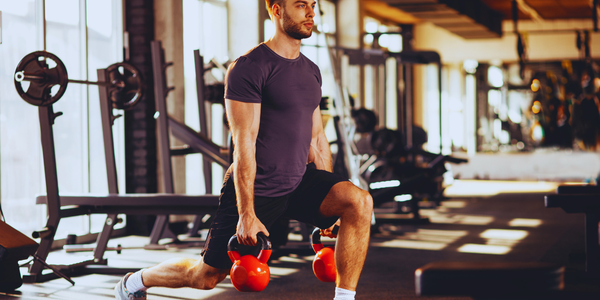Physical Therapist's 7-Minute Solution for Full Body Tension Release
Discover a physical therapist-approved routine for muscle tension relief that takes just 7 minutes. Learn expert techniques to release tightness throughout your entire body

https://www.youtube.com/watch?v=ClqPtWzozXs
Did you know 77% of Americans often feel physical symptoms from stress? In today's fast world, muscle tension is a big problem. It affects millions of people's health and happiness.
Relieving muscle tension is not just nice; it's essential for staying healthy. Learning stress reduction techniques can change how your body handles daily stress. This can stop pain problems before they start.
Dr. Sarah Reynolds, a top physical therapist, has created a groundbreaking 7-minute routine. It's designed to release body tension. Her method uses science and simple, doable steps that anyone can follow, no matter their fitness level.
By using specific stretching techniques, people can fight the physical effects of chronic stress. This helps build both mental and physical strength.
Key Takeaways
- Muscle tension is directly linked to stress and can cause significant health issues
- A targeted 7-minute routine can help reduce physical and mental strain
- Consistent practice leads to improved stress response and body awareness
- Professional techniques can be learned and applied at home
- Pain management starts with understanding and addressing body tension
Understanding Body Tension and Its Impact on Physical Health
Body tension is more than just a physical discomfort. It's a complex response that affects your health and well-being. Stress management is key to understanding how our bodies react to stress.
Chronic stress causes physical reactions that harm your health. Studies show that about 80% of people experience muscle tension due to stress. This leads to physical and mental challenges.
Common Signs of Physical Tension
Knowing the signs of physical tension is the first step to relaxation. Key indicators include:
- Persistent muscle stiffness and pain
- Frequent headaches
- Increased fatigue
- Reduced range of motion
- Heightened sensitivity to physical discomfort
The Science Behind Tension Release
Massage Therapy and Trigger Point Therapy are backed by science. They target specific muscle groups to release stress.
| Stress Impact | Physiological Response | Potential Health Risks |
|---|---|---|
| Muscle Tension | Increased muscle rigidity | Chronic pain, reduced mobility |
| Hormonal Changes | Elevated cortisol levels | Weakened immune system |
| Cardiovascular Strain | Blood pressure elevation | Heart disease risk |
Understanding the body-mind connection is key to effective stress management. By using targeted relaxation techniques, you can lessen the harm of physical tension.
Muscle Tension Relief: A Step-by-Step Approach
Releasing muscle tension needs a smart plan. This plan mixes myofascial release techniques with specific stretching exercises. Progressive Muscle Relaxation (PMR) is a proven way to tackle tension all over your body.
PMR is a step-by-step method. It involves tightening and then relaxing muscles. Here's how it works:
- Identify major muscle groups
- Tense each muscle group for 5 seconds
- Release and relax for 15 seconds
- Focus on breath synchronization
Adding anti-inflammatory remedies can help too. Studies show PMR can lessen muscle tension and stress. A 2019 study found it boosts well-being and lowers anxiety.
- Key muscle groups to target:
- Neck and shoulders
- Arms and hands
- Chest and back
- Abdomen
- Legs and feet
Experts say to do this routine twice a day for the first two weeks. Stretching gets better with regular practice. It helps you tell tension from relaxation.
Learning to relax muscles takes time. Start slow, be kind to yourself, and focus on the right technique.
Conclusion
Physical therapy is a great way to handle muscle tension and lower stress. The 7-minute solution we talked about is easy to follow. It can change your daily life for the better.
Relaxation techniques are very effective in reducing stress. Studies show they can slow down your heart rate, lower blood pressure, and improve focus and mood. Muscle tension massage is one way to reduce stress and feel better in your body.
You don't need a lot of time or complicated methods to improve your health. Simple, regular actions can make a big difference. If you have muscle knots or want to prevent them, these strategies can help.
Keep in mind, everyone reacts differently to stress relief methods. You might want to talk to a physical therapist for advice that fits you. Start using these practices to invest in your health and well-being.
FAQ
What causes muscle tension in the body?
Muscle tension comes from many things. It can be from stress, bad posture, or not moving enough. Sitting a lot and using computers also makes muscles tight.
How quickly can I expect to see results from the 7-minute tension release routine?
You'll see results fast if you do it every day. Many feel better right away. But, it takes 1-2 weeks to really see a difference in how flexible you are.
Is this tension release method suitable for people with different fitness levels?
Yes, it works for everyone. You can make the exercises easier or harder based on how you feel. This way, it fits anyone's fitness level.
Can this routine help with chronic pain management?
It can help with pain, but it's not a cure. It can make muscles less tense and hurt less. But, if you have chronic pain, you should see a doctor too.
How often should I perform the tension release routine?
Do it every day for the best results. It helps with stress and keeps muscles flexible. Even a short version can help a lot.
What equipment do I need to perform this routine?
You don't need much. Just a yoga mat or a comfy spot on the floor. You might want a towel or resistance band, but they're not necessary.
Can this routine help improve my overall flexibility?
Yes! It has stretches and techniques to make muscles more flexible. This can help you move better and feel less stiff.
Are there any precautions I should take before starting this routine?
If you have health issues or injuries, talk to a doctor first. Listen to your body and don't do too much too soon.
How does muscle tension impact mental health?
Muscle tension is linked to stress. It can make you feel anxious and less clear-headed. Doing this routine can help your body and mind feel better.
Can I combine this routine with other stress-reduction practices?
Yes, it goes well with other stress-reducing activities. Adding things like meditation or yoga can make you feel even better.
Source Links
- Reduce Your Tension With Progressive Muscle Relaxation in Just 5 Minutes
- 8 Relaxing Exercises That Will Release Tension From Your Entire Body
- The Effects of Stress on Your Body
- How stress affects your body and behavior
- Progressive Muscle Relaxation: Benefits, How-To, Technique
- How to do progressive muscle relaxation for anxiety.
- VA.gov | Veterans Affairs
- Relaxation techniques: Try these steps to lower stress
- How to Deal With Muscle Knots: Tips for Pain Relief
👉 Join the Active Man Community
Get expert tips, workout guides, nutrition hacks, and the latest trends delivered straight to your inbox every week. No spam — just actionable insights to help you live stronger, healthier, and better.





